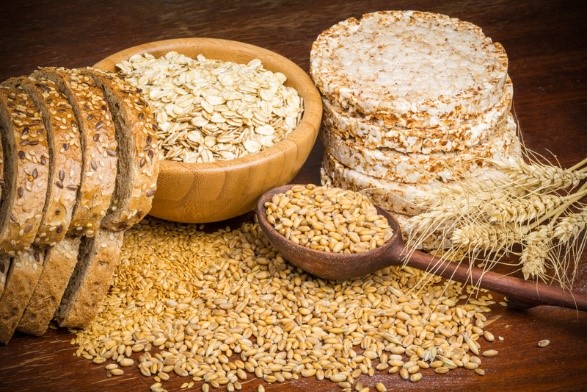You have probably heard people referring to the term “whole grains” or seen it advertised on the packages of the foods you buy in the grocery store. You also likely know that whole grain foods are better nutritional choices. But what exactly are whole grains?
Grains are the seeds of different types of grasses grown for food, including wheat, rice, barley, farro, quinoa and millet. Each grain is made up of three parts: the bran, germ and endosperm. Each part contains vitamins, minerals and fiber. However, when food is made from grains, different processes remove certain parts and may add other supplements. Below is a list of the types of grains used in food:
Whole Grains: These contain the entire grain. Examples include whole wheat flour, bulgur, oatmeal and brown rice. Whole grains naturally contain healthy nutrients, protein, fiber and antioxidants. They are an important part of a healthy diet and can reduce your risk of heart disease, obesity, diabetes and other chronic illnesses.
Refined Grains: These grains have had the bran and germ removed. As a result, foods made with refined grains have a longer shelf life and finer texture. Refined grains have most of their fiber and many other nutrients removed. These foods include white rice, crackers, white bread and many baked goods.
Enriched Grains: These grains are refined but then undergo a process to have vitamins and minerals added back in. Governmental guidelines encourage grains to be enriched due to widespread nutrition problems caused by foods made with refined grains. However, although some nutrients are added back, fiber is not. Fiber is crucial to a healthy diet because it aids in digestion, helps manage weight, controls blood sugar and reduces the risk of heart disease and certain cancers.
Fortified Grains: These grains have nutrients added that are not naturally in them. For example, many types of bread and cereal are fortified with iron and folic acid.
Whole grain foods naturally provide fiber, vitamins and minerals. They help control cholesterol levels, blood pressure and weight. Regularly eating whole grains reduces the risk of heart disease, stroke and diabetes. Although it is not always easy to determine what kind of grain is in a product, you can read the nutritional label. Whole grains should be listed near the top of the ingredients. Here are other ways to make sure you are eating enough whole grains:
- Use whole grain pasta
- Buy whole grain tortillas
- Replace white rice with farro, quinoa, brown rice or barley
- Eat cereals made with whole grains, like bran flakes, shredded wheat or oatmeal
- Substitute white bread, English muffins, bagels and pastries with whole grain breads
- Substitute pasta or rice in soup with a whole grain alternative
- Snack on popcorn, which is a whole grain food
The Dietary Guidelines for Americans recommend that at least half of all the grains you eat should be whole grains. So, next time you are at the grocery store, look for items that contain 100% whole grains and start incorporating them into your diet. Your body will thank you!
By: Caitlin Kemmerer


Most Commented